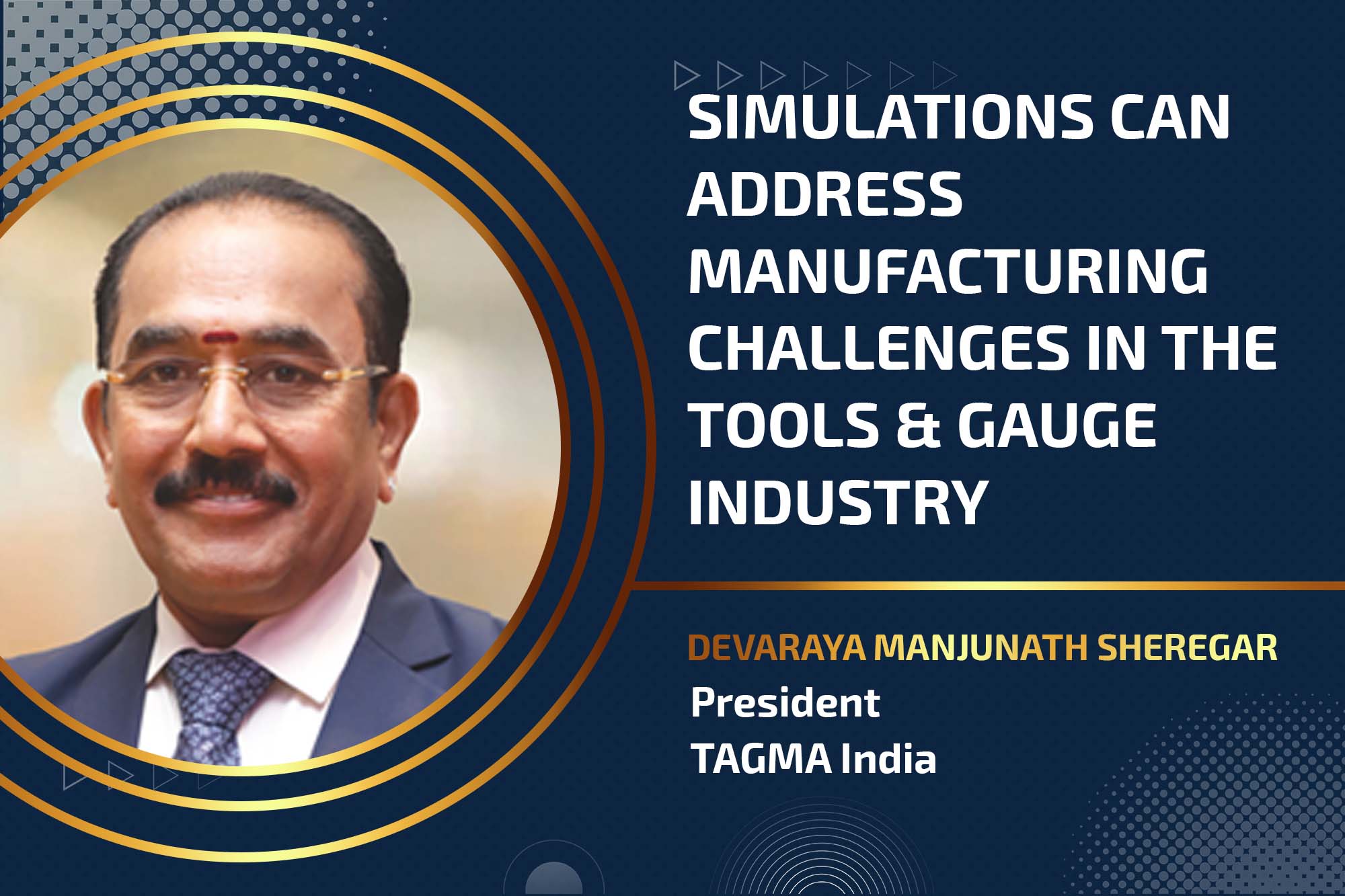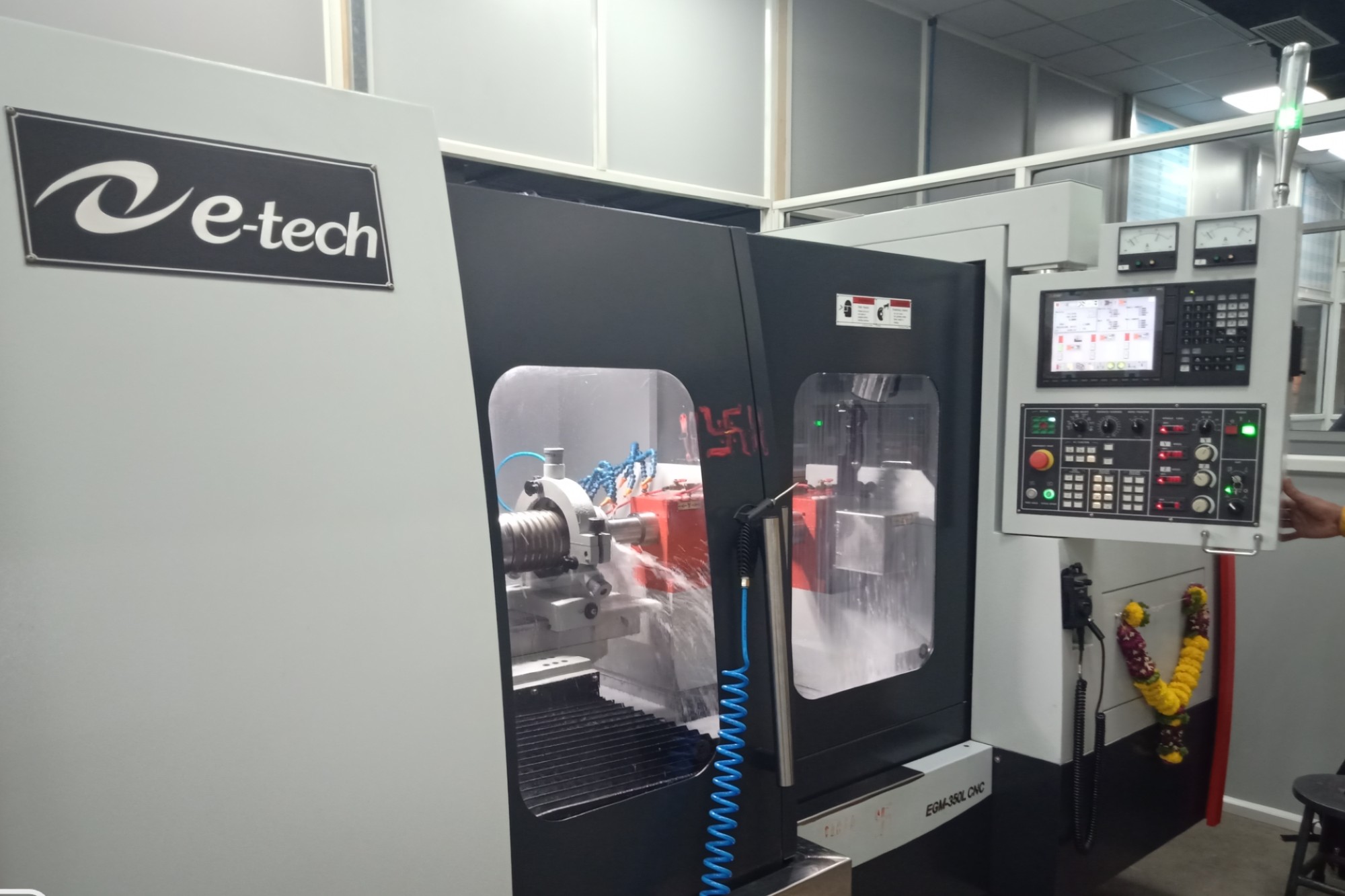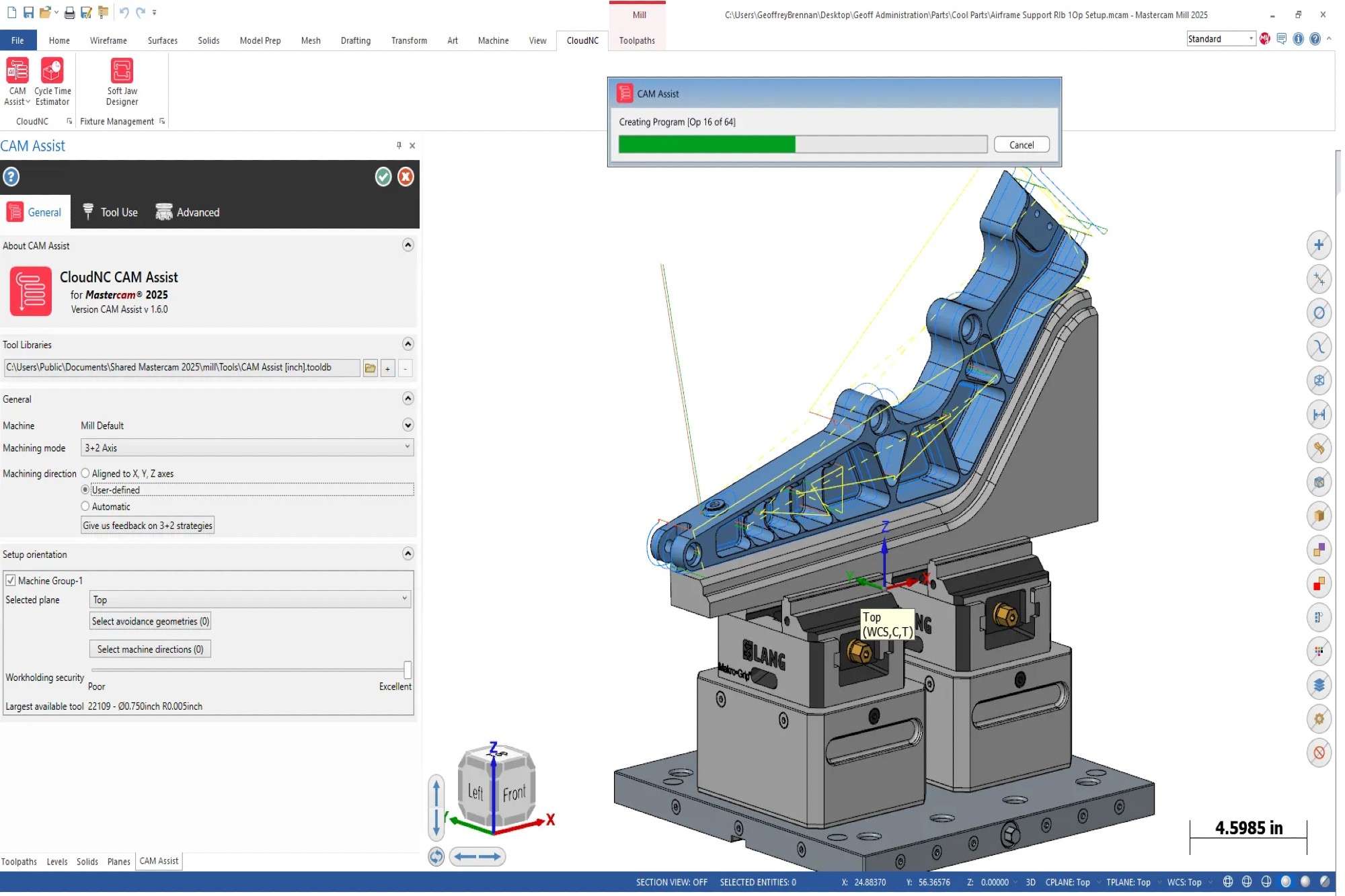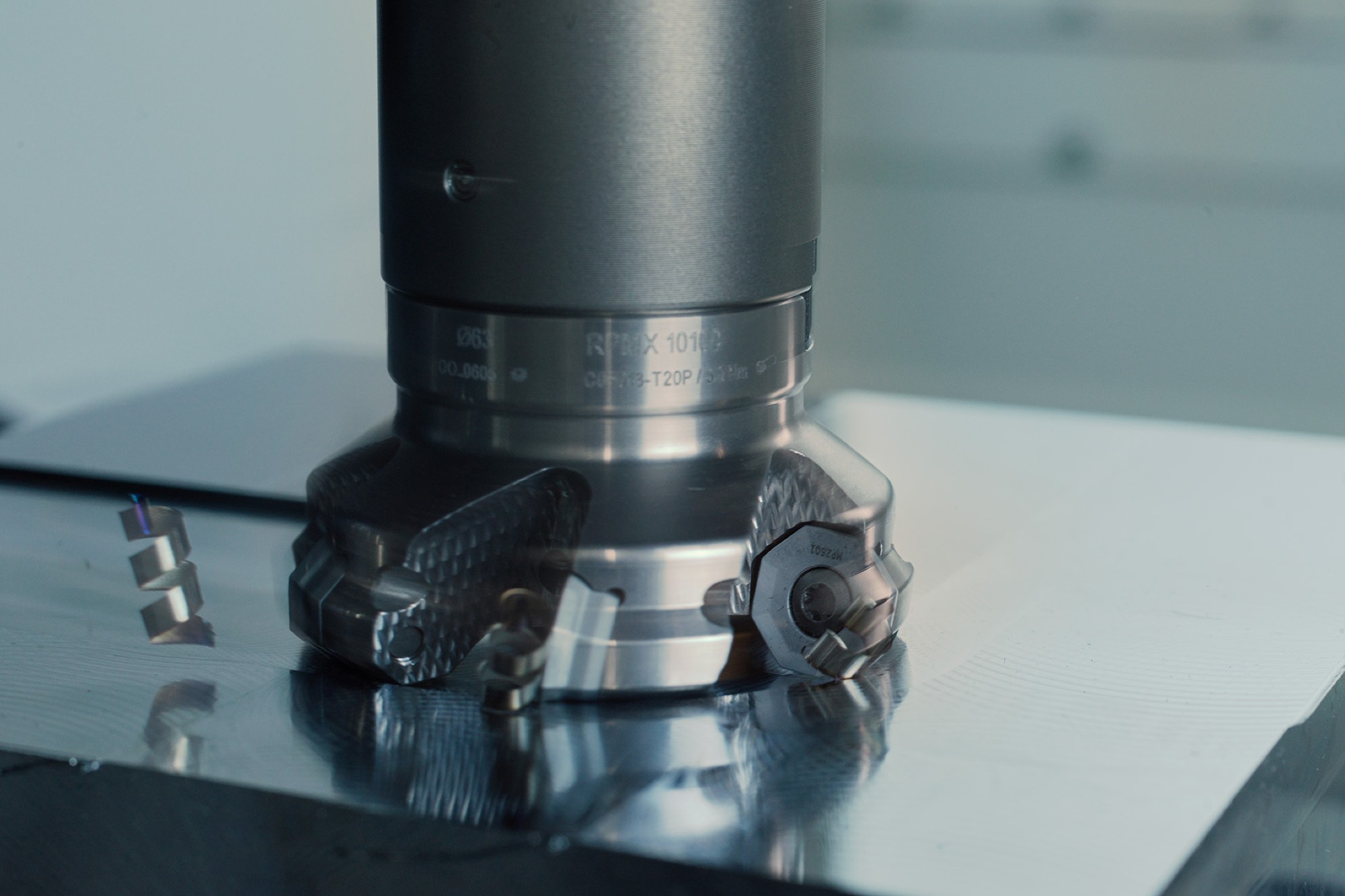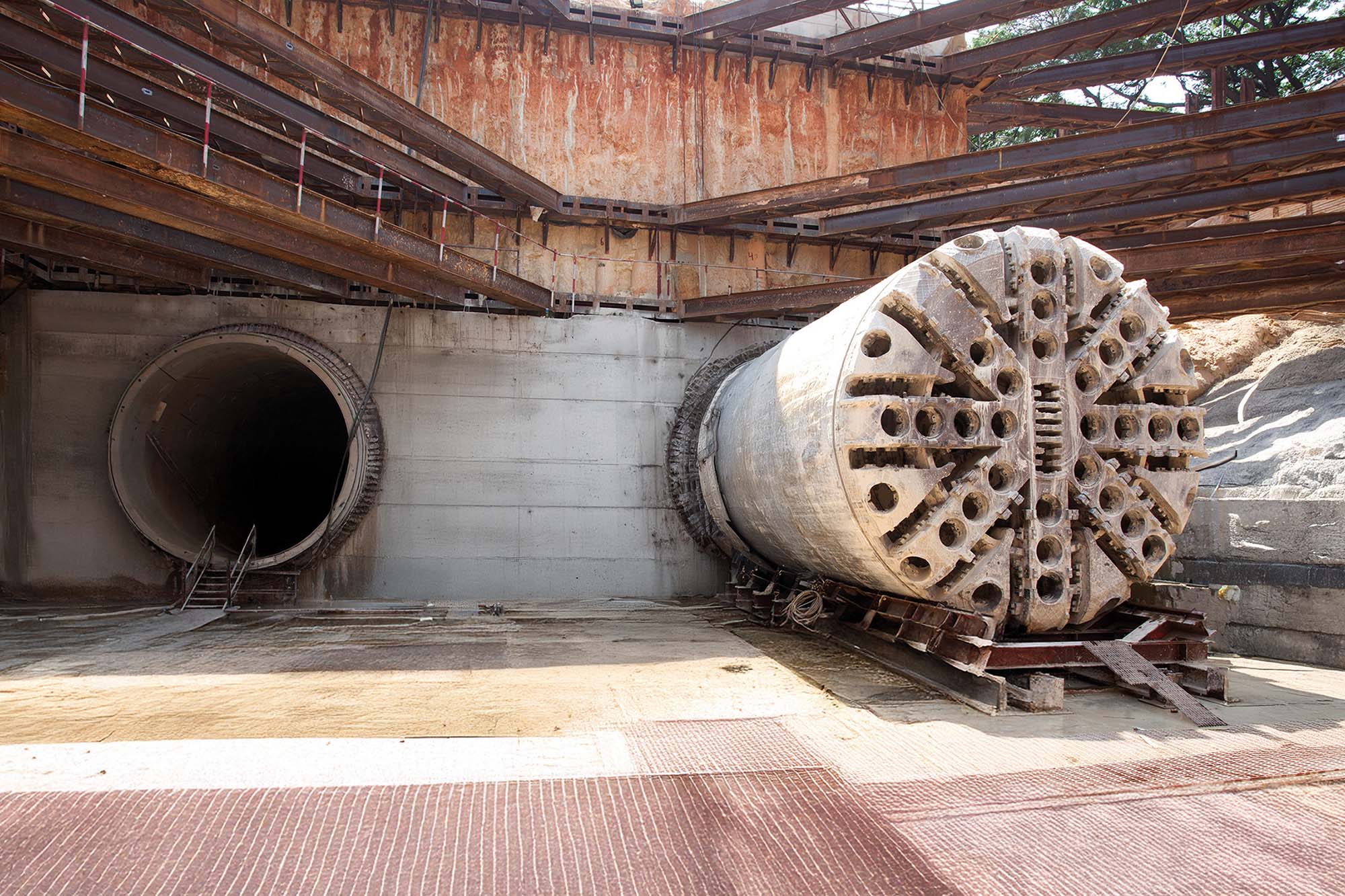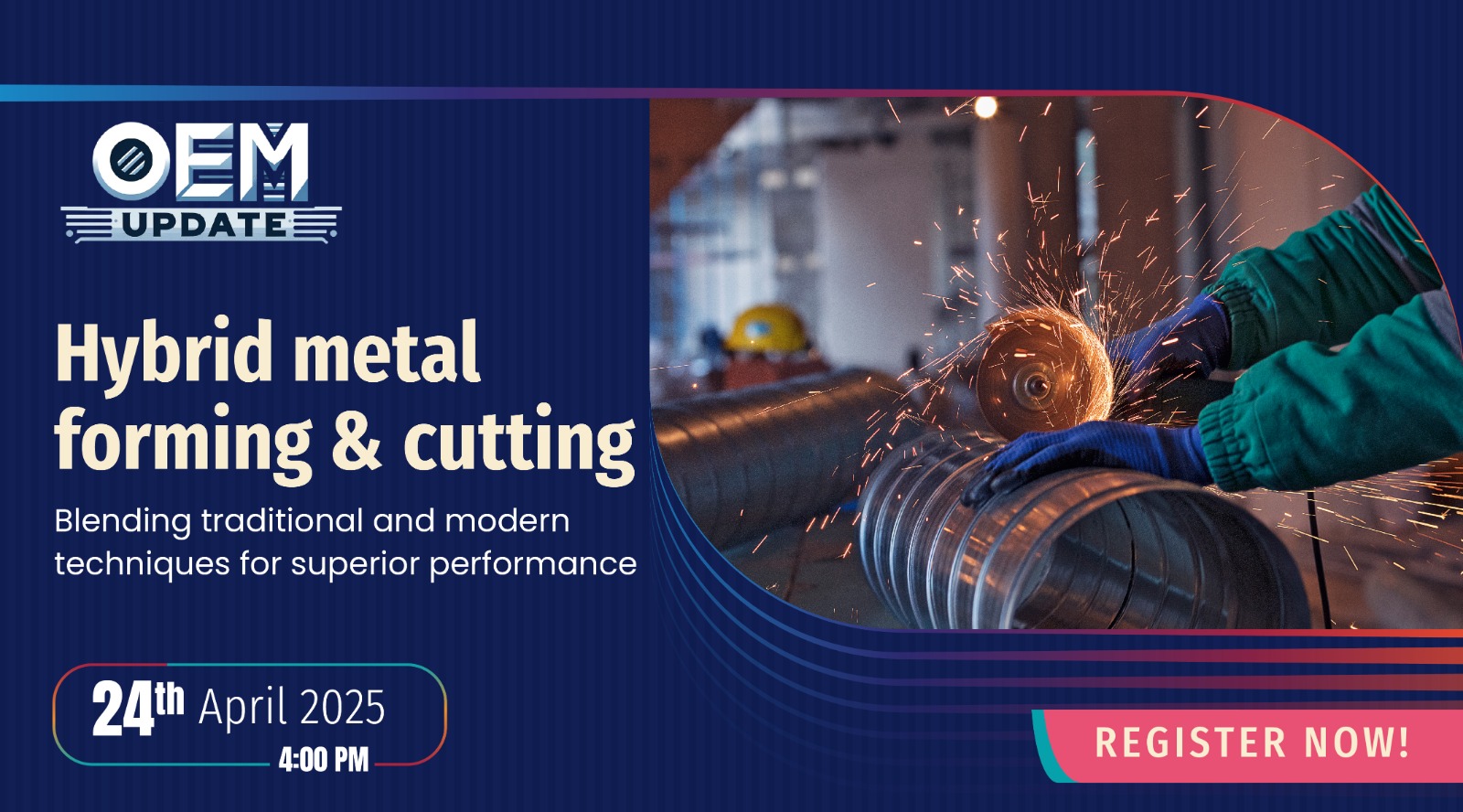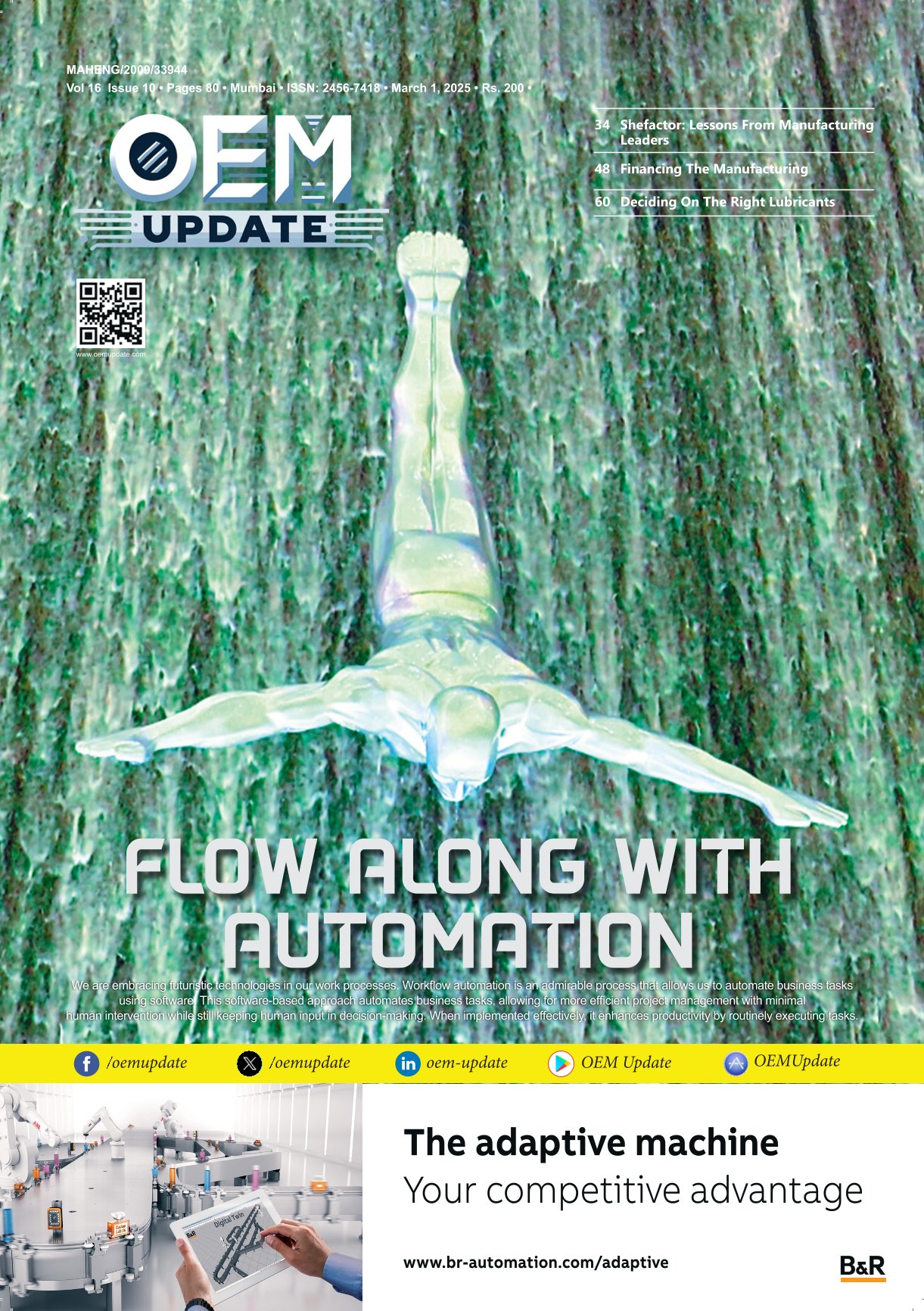Simulations can address manufacturing challenges in the Tools & Gauge industry
By OEM Update Editorial June 5, 2024 12:00 pm IST
Devaraya Manjunath Sheregar, president of TAGMA India, recommends strategic measures like adopting sensor-equipped machines and advanced technologies, investing in skill development, and enhancing production capacity to address manufacturing challenges and scale up processes in the tools and gauge industry.
What growth perspective do you envision about the India Tool Room industry?
The future of the Indian die mould industry appears promising, driven by positive indicators such as the robust growth of the Indian economy, increasing purchasing power, rising foreign direct investments (FDIs), and a steady increase in manufacturing output. The consistent month-on-month growth in GST collection further signals a favourable business environment.
According to the Indian Tooling Report, the Indian tooling industry is estimated to grow at a CAGR of ~7-8 percent by 2028 aligned to strong growth in key end-user segments. Between 2023 and 2028, it estimates the automotive end-user segment to grow at a CAGR of 9 percent, consumer durables at 6 percent, plastic process at 7 percent, packaging at 6 percent, electronics at 6 percent, electricals at 7 percent, general engineering at 9 percent, and aerospace and defence at 7 percent, respectively.
Please discuss advancements in design in the Indian Tool Room & Die and Mould Industry.
Design software (CAD) for the tool and die-making industry is evolving rapidly, bringing specialised features and functionalities. Software now caters to specific needs like progressive die design, incorporating features for automatic station creation, material handling simulation, and even the unfolding of complex shapes. Similarly, mould design benefits from dedicated tools for designing conformal cooling channels that precisely follow mould contours for efficient cooling. Additionally, advanced simulation capabilities predict sheet metal behaviour under forming conditions, optimise tool design, and prevent warping or cracking in the final product.
Beyond specialisation, integration is key. Leading software packages seamlessly link design (CAD), manufacturing (CAM), and engineering analysis (CAE) functionalities, streamlining workflow and eliminating data conversion hassles. Cloud-based solutions enhance collaboration by allowing real-time interaction between designers, engineers, and mould-makers across locations. Generative design is also making inroads, enabling designers to define parameters and have the software create various design options that meet those criteria, fostering the exploration of innovative and potentially more efficient tooling.
User experience is not neglected either. Software interfaces are becoming more user-friendly with drag-and-drop functionality, intuitive toolbars, and context-sensitive help. Virtual Reality (VR) is even being explored for design review, allowing designers to walk through a 3D model virtually for better visualisation and identification of potential issues.
These advancements empower tool and die makers to design more complex and efficient tooling. Streamlined workflows, integrated features, and automation capabilities can significantly reduce design time and costs. Advanced simulation tools and specialised features help optimise tool design, leading to better product quality and reduced production issues. Cloud-based solutions and improved user interfaces further facilitate communication and collaboration throughout the design and manufacturing process. The future of CAD software in the tool and die-making industry is undoubtedly bright, with continuous advancements propelling efficiency, innovation, and collaborative design.
How are automation and Industry 4.0 contributing to the scale-up of die manufacturing for various processes?
Automation and Industry 4.0 technologies are revolutionising die manufacturing for various processes. Industrial robots can handle repetitive tasks like material handling, machining operations, and polishing, freeing up skilled workers for more complex tasks. Additionally, sensor-equipped machines collect real-time data on machine health and performance, allowing for predictive maintenance and minimising downtime. Cloud-based platforms integrate design (CAD) and manufacturing (CAM) processes, streamlining workflows and optimising production schedules. This data-driven approach ensures efficient use of resources and materials, minimising waste. Overall, automation and Industry 4.0 technologies enable scale-up production of high-quality dies while reducing costs and optimising production efficiency.
What recommendation will you suggest to address manufacturing challenges to scale up processes in the Tools & Gauge industry?Indian toolmakers need to implement strategic measures to ensure competitiveness in this evolving market. Embracing advanced technologies and automation will enhance efficiency, precision, and competitiveness. Adopting Industry 4.0 practices can optimise manufacturing processes.
Adopt New-age Manufacturing Practices: Keeping pace with modern manufacturing methodologies, such as additive manufacturing and digital twin technologies, will position companies at the forefront of innovation.
Invest in Skill Development: Continuous training and upskilling of the workforce are crucial. The industry’s ability to adapt to evolving technologies relies heavily on a skilled workforce. Investing in training programs ensures that employees stay abreast of the latest advancements.
Expanding production capacity will be essential with the expected growth in demand. Scaling up operations ensures companies meet increasing market requirements and maintain a competitive edge.
Please discuss TAGMA’s strategy to create a culture of continuous learning, upskill workers, and empower them to make decisions based on technological advancement.
Workers must keep learning new skills in the fast-changing die and mould industry. TAGMA understands this and has set up educational programs to help. ToolTalk is a monthly webinar that started in April 2021. It lets people talk directly with industry leaders and experts worldwide about the tooling industry and what customers need. The Tooling Academy is another program that helps Indian tooling workers get better at their jobs. TAGMA works with an expert every month to run an online training session. This helps keep everyone up-to-date with the latest news, technology, and the best ways to make things. We also organise the International Tooling Summit to help our members connect with subject experts and exchange ideas.
What are the advantages of the Make in India initiative to scale up manufacturing?
The Make in India initiative acts as a catalyst for scaling up manufacturing in India, driving the nation’s shift from a service-based to a manufacturing-centric economy. The program creates a ripple effect by attracting Foreign Direct Investments (FDIs) and large corporations to set up shop in India. These companies not only bring in their expertise and technology but also create a demand for high-quality tools and dies.
This increased demand benefits local toolmakers in several ways. Firstly, it fuels business growth as domestic manufacturing flourishes. Secondly, the need for tools and dies to cater to these new production lines creates a surge in demand for their products and services. Thirdly, as these companies establish their manufacturing bases in India, there is a growing need for a skilled workforce. This presents an opportunity for the tool and die-making industry to contribute to skill development programs, ensuring a future-ready workforce that can meet the demands of this growing sector. Therefore, the Make in India initiative acts as a springboard for the tool and die-making industry, paving the way for its growth and prosperity alongside the scaling up of domestic manufacturing.
Cookie Consent
We use cookies to personalize your experience. By continuing to visit this website you agree to our Terms & Conditions, Privacy Policy and Cookie Policy.



